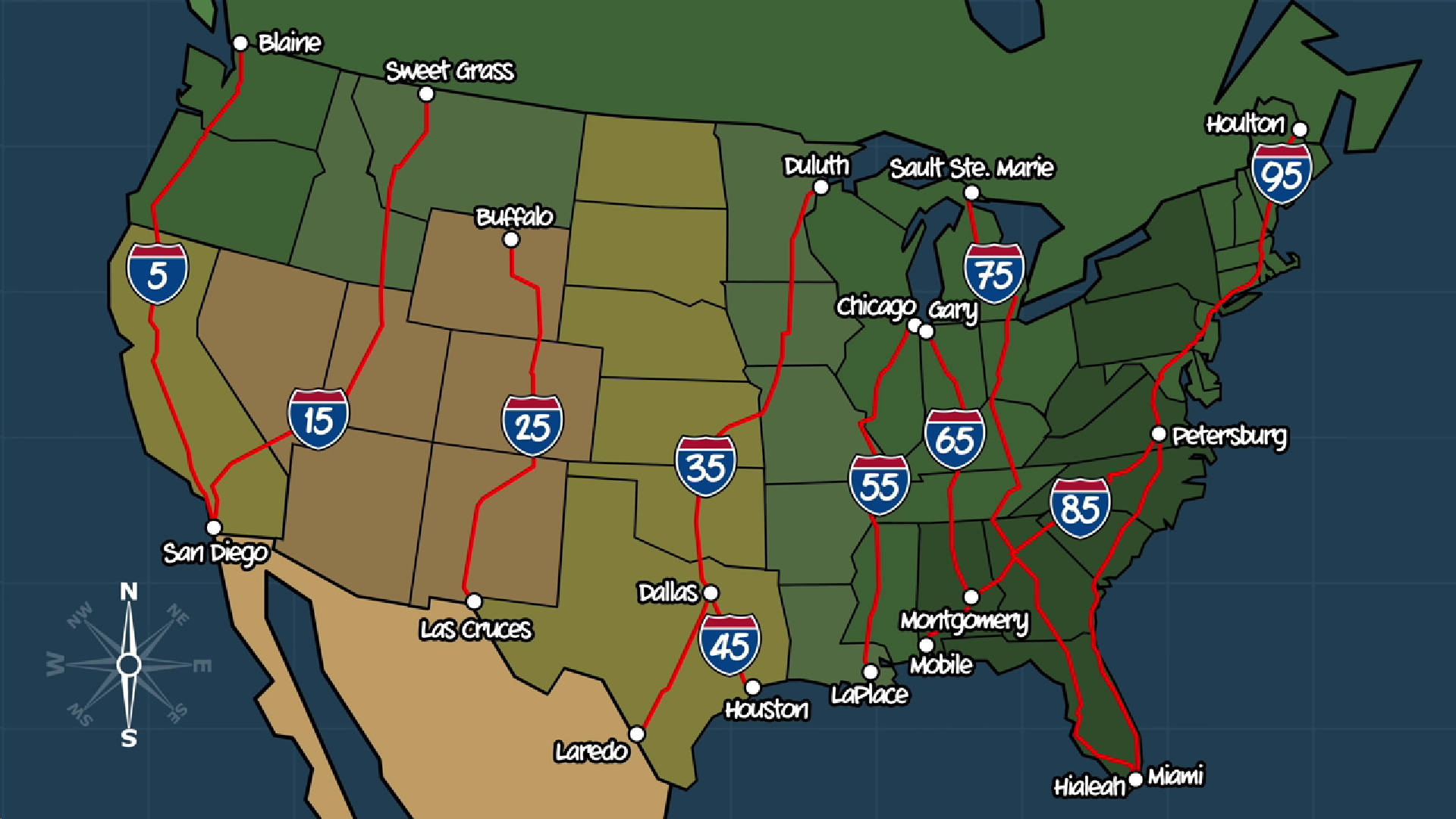Since the Interstate highway system was created from whole cloth, rather than emerging through the years, it shouldn’t come as a surprise that there is a defined logic to the numbering system that defines it. If you know the system, you can always know (roughly) where you are and where you’re going.
A new video from CGP Grey shows how Dwight Eisenhower’s highways create a grid pattern from which all naming is derived and what those numbers tell you. The largest members of the Interstate Highway System are called majors and they form a grid that crisscrosses the nation.
All major interstates have two numbers (with the exception of Interstate 5, so pedants just have to imagine a zero) and the numbers rise from east to west and south to north. That means that the lower the number of the highway you’re on, the closer you are to California, and the higher the number, the closer you are to Maine.
Read Also: Nearly $5 Billion Heading To States To Build America’s National EV Charging Network
Any major interstate ending with a zero goes east-west and any one ending with a five goes north0south. So, I90, for example, goes from Seattle to Boston, whereas I15 goes from Sweet Grass, Montana, to San Diego, California.
The system determining the naming conventions of the major interstates is a little more satisfying than the system determining the naming conventions of the minor and medium interstates (and fraught with fewer exceptions) but there are rules there, too, that can be helpful.
Interstate minors use three numbers, with the final two digits being a reference to the interstate major from which it branches. Whether the first number is odd or even, meanwhile, determines whether or not the highway rejoins the major or not. If you’re on I620, you’ll soon be back on I20; if you’re on I720, you won’t.
Finally, there are interstate mediums, which also have two digits but don’t end in five or zero. These, instead, tell you whether you’re going north-south or east-west by using odd endings to mean the former and evens to mean the latter.
It’s not a perfect system, as exceptions and oddities abound, but it is at least nice to know that there are some helpful rules governing the naming of interstate highways.
[embedded content]



